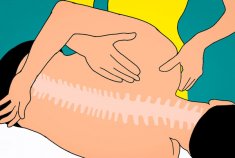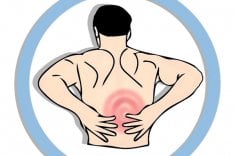The following are the four sets of vertebrae that make up the spine:
Cervical vertebrae (C segments): 8 segments of bone (vertebrae); C1-C8 spinal nerves.
Thoracic vertebrae (T segments): 12 segments of bone (vertebrae); T1-T12 spinal nerves.
Lumbar vertebrae (L segments): 5 segments of bone (vertebrae); L1-L5 spinal nerves.
Sacral vertebrae (S segments, fused): 5 segments of bone (vertebrae); S1-S5 spinal nerves.
All of the things that can go wrong at the spine to create lower back pain can also occur at any other spinal level, so the thoracic and cervical levels are no exception. Since pain in the thoracic spine, which consists of the T1–T12 spinal nerves, is similar in respect to the pathology, diagnosis, and treatment options for lower back pain (at L1–L5), this discussion will center on the upper vertebral column, particularly the cervical segments at C1–8.
What causes upper back and cervical (neck) pain?
As was discussed in the last part of thi ...
Pain, be it lower back, upper back, or any other type, is classified as either acute or chronic. Chronic pain is often defined as pain lasting more than three months. The three-month mark dividing the two assumes that the original cause of the injury should be healed by then, but even healing can leave in its wake a chronic syndrome that is a different disease altogether. The three-month mark also denotes that if the original cause has not healed, then it unlikely to do so and will persist as an ongoing chronic pain.
What are the causes of low back pain?
Most adults have low back pain at some point in their lives. Most of these adults—up to 85% of them— will be unable to identify the cause. Most patients who have low back pain for an unidentifiable reason will improve over a few weeks. However, the longer it takes for pain resolution, the lower the likelihood of the back reverting to a pain-free state.
Common causes of low back pain include:
Herniated disc, o ...

